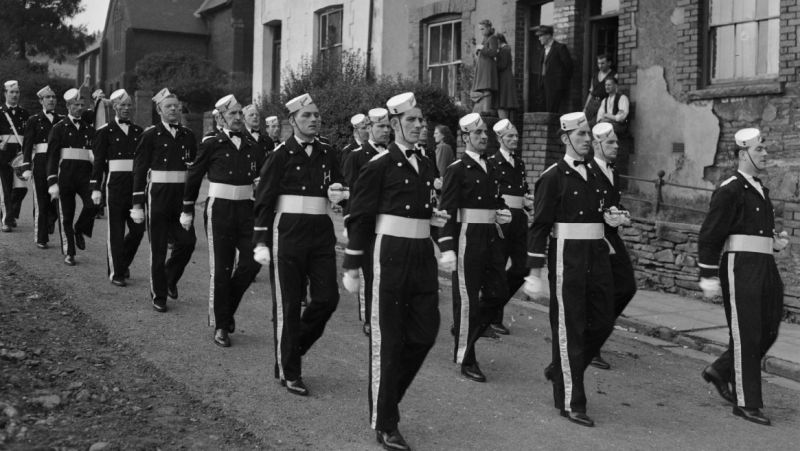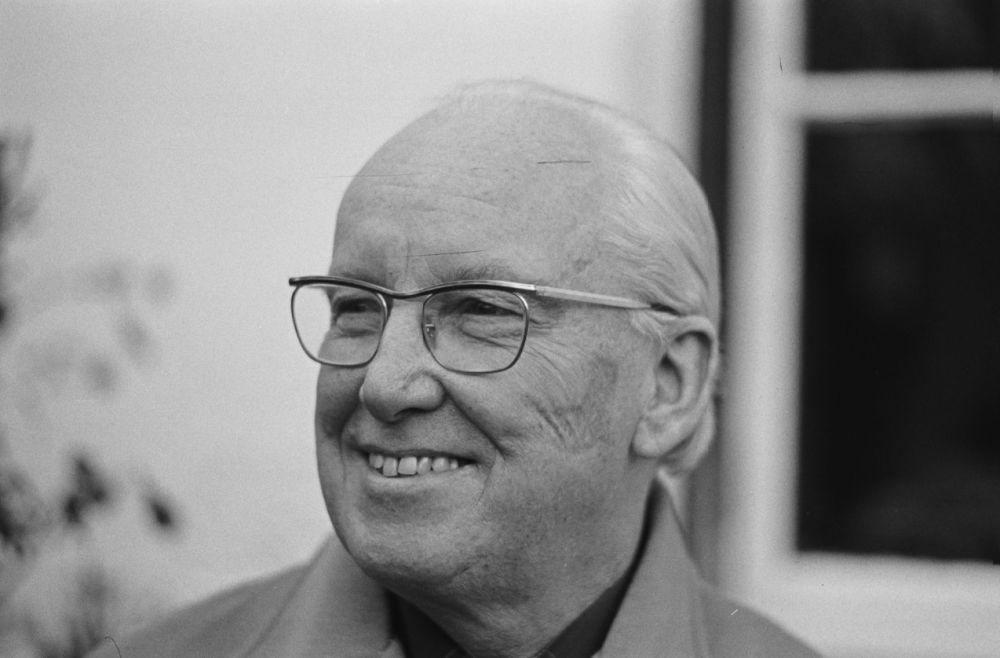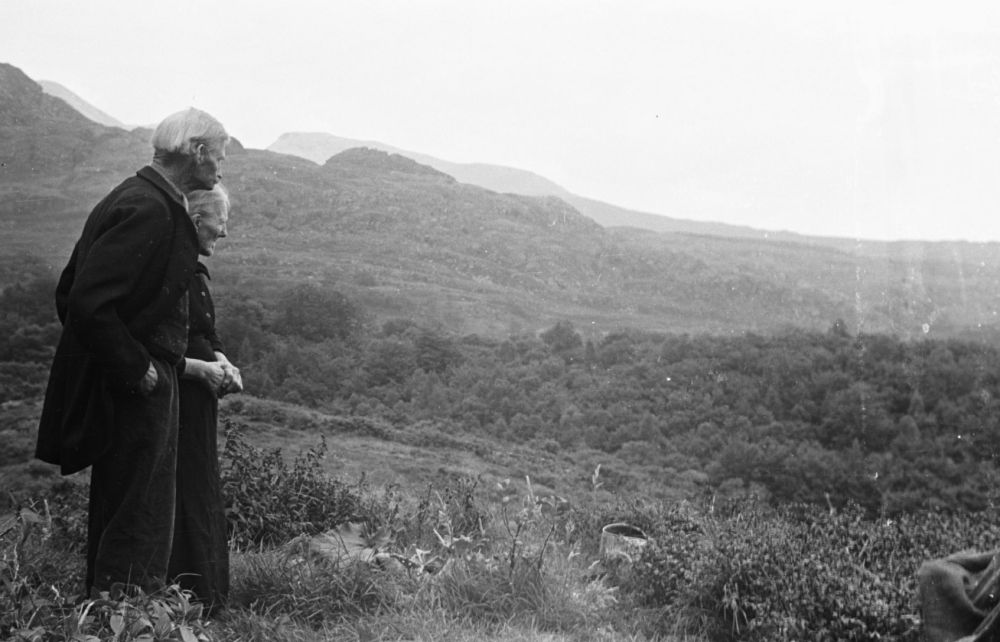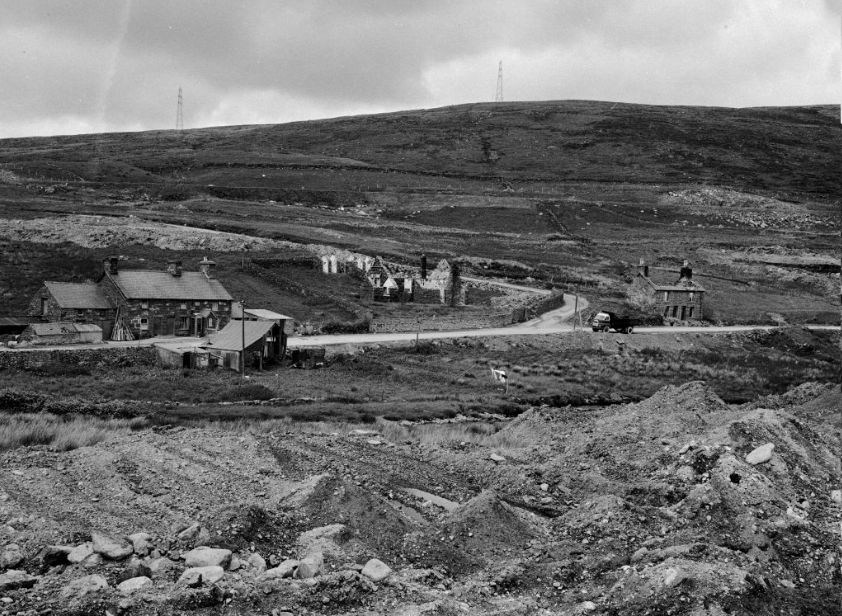
Viewing the Geoff Charles collection
You can search and view the Geoff Charles collection on the Catalogue.
Geoff Charles' contribution to Welsh photography is unique. His approach is characterized by both an innate talent and an empathy for his subjects.
He worked as a photojournalist in Wales from the 1930s to the 1970s and was the photographer of record in Welsh-speaking Wales for most of that period. Today his archive is one of the treasures of The National Library of Wales.

You can search and view the Geoff Charles collection on the Catalogue.
Geoff Charles was born in Brymbo in 1909. He studied for a Diploma in Journalism at the University of London, from where he graduated with first class honours in 1928. For a short period he worked as a reporter for the Western Mail covering dirt track racing, greyhounds and inquests. Subsequently he covered court cases and council meetings for the Mountain Ash and Aberdare Express before moving to Guildford to work on the Surrey Advertiser. He later returned home following a serious bout of illness to work on the Wrexham Star, a paper established on a shoestring budget in February 1934. The paper was sold at a penny by street vendors and aimed to undercut the Wrexham Leader which sold for twopence. Shortly after joining the Wrexham Star he reported on the Gresford Colliery Disaster. Having gained access to the lamp room, he ascertained that the official figure of 100 men underground was an understatement. Armed with this information, he rushed out a special edition of the paper.

Photograph of Geoff Charles
Ironically an economic upturn spelled the end of the Wrexham Star as many of its sales force found regular employment. It was whilst working for the Wrexham Star that Geoff bought his first camera, a VPK Thornton Pickard using 6 x 9 cm. (2.5 x 3.5 inch) glass plates. In March 1936 the paper was taken over and amalgamated with the Wrexham Advertiser. It was here that Geoff Charles, now a competent photographer, first met managing director, Rowland Thomas, and impressed him sufficiently to be offered management of the photographic section of Woodalls Newspapers. He shortly afterwards moved to Newtown to run the Montgomeryshire Express where he encountered a promising young reporter called John Roberts Williams for whom he was to illustrate stories for Y Cymro. Occasional work for Y Cymro started in 1937 when the Reverend Lewis Valentine was interviewed shortly before being imprisoned for his part in the symbolic burning of the Penyberth Bombing School. His connection with Y Cymro almost ceased during the war years when he served on the Demonstration sub-committee of the Montgomeryshire War Agricultural Executive Committee helping to implement improved farming practices. Much of his material from this era was destroyed in a fire.
His work for Y Cymro resumed in earnest after the war when John Roberts Williams was appointed editor. Their work soon surpassed any other photojournalism hitherto seen in Wales. Geoff Charles is also quick to cite Picture Post as an influence at this time. The image of the farmer-poet Carneddog and his wife forced to leave their farm in the Carneddau Mountains due to the death of their son is his best known work. Perhaps no other photograph has taken hold of the Welsh imagination as did this. So deeply did it penetrate the Welsh psyche that in many homes it was pinned up alongside Curnow Vosper's "Salem". Over this period his work recorded far more than events and personalities; piece by piece, photo by photo a vanished way of life is revealed: witness the farmhands living in the lloft stabl, the postman delivering letters on horseback or the old quarryman demonstrating the car gwyllt. The arrival of electricity in remote villages, a new militancy in the campaign for recognition of the Welsh language and the effects of mechanisation in agriculture are all recorded in his work.

Photograph of Carneddog and his wife, Catrin before leaving their mountain farm in Eryri
If any of his photos should be singled out, then those of Tryweryn deserve special mention. Wales held her breath; would this community be allowed to live or would it drown beneath a new reservoir to supply Liverpool? The village drowned, but not before Mr Charles photographed many images that recorded a way of life and a community which disappeared simultaneously. Whilst life in the Tryweryn valley was no different from that in many other parts of Wales, the threat to its existence ensured that every detail of life was meticulously recorded.

The ruins of Capel Celyn
Geoff Charles retired in 1975 but continued to contribute articles and photographs to Y Cymro and Farmers Weekly on a freelance basis. He donated his collection of 120,000 negatives to the National Library of Wales. All have been contact printed and cross-referenced to the publications in which they appeared. The collection has proved an invaluable resource for authors, historians, students and the general public.
Unfortunately during the late 1990s some of the negatives started to produce a distinctive vinegary smell. This was recognised as the onset of a potentially serious threat to any collection of acetate film.
Vinegar syndrome is the popular name for degradation of negatives on cellulose acetate film bases. Though far more practical than their nitrate predecessors, cellulose acetate based films are not indestructible. Problems arise when the cellulose acetate which supports the photographic emulsion starts to degrade, producing acetic acid ("vinegar") as a by-product. Cellulose acetate is a modified version of cellulose. It can, depending on temperature, relative humidity and acidity, attempt to revert back to its original form. This in turn produces acetic acid within the plastic which diffuses to the surface, causing odour, embrittlement and, most damagingly, shrinkage of the film base. This shrinkage leads to the film emulsion, undamaged by the acid, separating from the film base, causing the characteristic channelling. The process of deterioration can be slowed right down by vacuum sealing and freezing the affected negatives.
However for a popular working archive like Geoff Charles' this is not a practical solution. The conservation department within the Library is therefore undertaking the challenging task of “treating” these affected negatives.
Using a technique developed by Chris Woods, a Research Fellow at the University of the Arts London and Ian and Angela Moor at the Centre for Photographic Conservation, the gelatine and cellulose layers that cause the damage to the negative are removed, and the image pellicle re-hydrated and re-suspended in inert polyester housings.
This treatment means that Vinegar Syndrome can no longer damage the image pellicle, and that the negatives no longer need specialised freezing storage. So far over 1500 negatives have been treated in the past year alone, and it is hoped that all the cellulose acetate negatives in the Library’s collection can be treated in this way. In most cases the treatment returns the negatives image to its original glory, and eventually these treated negatives will be re-digitised so that users have access to a higher quality image.
This is a very exciting project that demonstrates the worth of combining Conservation skills with Digitisation in order to secure the future safety of our collections and also provide readers with the best possible access to our collections, both digitally and physically.
These documents were created by the Library's volunteers by transcribing Geoff Charles's records. They also contain links (Hndl/Vital) to digital versions of the photographs.
More information about volunteering with the Library.
Original, master file captured in uncompressed TIFF format. Minimal tonal adjustments using levels and curves in PhotoShop. Master files archived as pc format TIFFS.
On-screen display files resized and adjusted for viewing on gamma 2.2 monitors in PhotoShop and saved in JPEG format.
8 negatives were scanned simultaneously on a Heidelberg Nexscan F4100 capture device using Linocolor v6.0.4 software.
Filter settings: light contour-0.5, dark contour-0.5, smoothness-0.6, contour width-1.0, scan spot size-4.0.
Target resolution for hi-res capture was 300dpi at a factor of 450% resulting in +/- 6000 x 5000 pixels; screen res:+/- 600 x 500 pixels at 72dpi; screen-res and thumbnail copies use jpeg compression at setting 7 in Adobe Photoshop v6.0; 8 bit grayscale; hi-res TIFFs Gray Gamma 1.8 icc profile embedded.